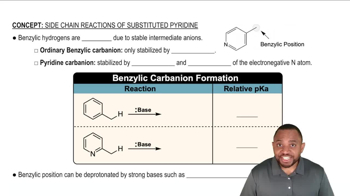Here are the essential concepts you must grasp in order to answer the question correctly.
Electrophilic Addition Reactions
Electrophilic addition reactions are fundamental in organic chemistry, where an electrophile reacts with a nucleophile, leading to the formation of a more saturated product. In the context of converting 1-phenylpropane to 1-phenylprop-1-ene, understanding how alkenes can react with electrophiles is crucial. This reaction often involves the addition of halogens or acids to the double bond, which can lead to various products depending on the conditions.
Recommended video:
Features of Addition Mechanisms.
Rearrangement Reactions
Rearrangement reactions involve the structural reorganization of a molecule, often leading to more stable or reactive forms. In the conversion of 1-phenylpropane to 1-phenylprop-1-ene, rearrangements can occur during the formation of carbocations, which may lead to unwanted side products. Recognizing potential rearrangements is essential to predict and minimize impurities in the final product.
Recommended video:
Definition of Claisen Rearrangement
Side Reactions and Impurities
Side reactions are unintended chemical reactions that can occur alongside the desired reaction, often leading to impurities in the final product. In the case of converting 1-phenylpropane to 1-phenylprop-1-ene, side reactions such as polymerization or elimination can produce undesired byproducts. Understanding these side reactions helps in designing better reaction conditions to enhance yield and purity.
Recommended video:
Side-Chain Reactions of Substituted Pyridines Concept 1
 Verified step by step guidance
Verified step by step guidance Verified Solution
Verified Solution



 4:39m
4:39m